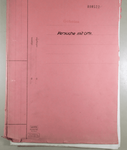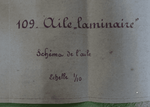drgondog
Major
Ethan - I have never seen a wind tunnel based Drag report on the Bf 109. Dr. Hoerner and others have stated that the CDtotal approaches .28-.32. Hoerner has a nice discussion of the Bf 109G in Chapter 14 of his "Fluid Dynamic Drag".
This is data without context as rigorous discussions of CD must also note that CD is plotted as a function of Reynolds number.
EDIT - I quit depending on memory - here are the corrections
At ~ 32 mph the RN=~2x10^^6 (from memory) and P-51D total CD for parasite drag is ~.0193 which includes cooling drag at Zero Lift CL/AoA. The RN=9x10^^6 at 146 mpg. At that RN the CD levels off and holds steady at 0.0155. At max speed the total CDp = .0155 (but here Compressibility multiplier is in range 1.8-2.0 .
This conversation requires a lengthy response for clarity - but Parasite Drag at top speed is dominant factor. Within the Parasite drag discussion at low angle of attack, there are four primary considerations.
First and most important is the profile drag of the lifting surfaces in level flight. The Mustang advantage dominates and a discussion of total drag force reduces to the CD of the wing multiplied by the Dynamic Pressure x Wing Area. At the same speed that the 109 is maxed out, the differences in total drag force is the ratio of wing area of Mustang (is 35% higher than 109) but the CD for the wing of the Mustang is 40-50% lower.
The next factor is profile drag of the fuselage including protuberances, gaps between control surfaces, skin gaps, radio antenna, bomb racks, carb intakes, radiator intakes, etc. The 109 was a dirty bird by comparison and these contributions in CD are not wing area determinants but individual contributions validated piece by piece in wind tunnels.
The next factor is cooling drag, which for a Mustang is astonishing, in that the Meridith Effect produces thrust at high speed but the 109 cooling drag is significant, perhaps 20-25% of the wing in magnitude in total force.
The last considerable drag force is that of friction drag. In NMF condition for the P-51D, the friction drag, particularly within the attached boundary layer, is much less than the camo Bf 109 - but this is a Wetted Area multiplication - advantage 109 with much less wetted area but offset by granularity of production camo paint surface roughness.
Hope this helps.
Bill
This is data without context as rigorous discussions of CD must also note that CD is plotted as a function of Reynolds number.
EDIT - I quit depending on memory - here are the corrections
At ~ 32 mph the RN=~2x10^^6 (from memory) and P-51D total CD for parasite drag is ~.0193 which includes cooling drag at Zero Lift CL/AoA. The RN=9x10^^6 at 146 mpg. At that RN the CD levels off and holds steady at 0.0155. At max speed the total CDp = .0155 (but here Compressibility multiplier is in range 1.8-2.0 .
This conversation requires a lengthy response for clarity - but Parasite Drag at top speed is dominant factor. Within the Parasite drag discussion at low angle of attack, there are four primary considerations.
First and most important is the profile drag of the lifting surfaces in level flight. The Mustang advantage dominates and a discussion of total drag force reduces to the CD of the wing multiplied by the Dynamic Pressure x Wing Area. At the same speed that the 109 is maxed out, the differences in total drag force is the ratio of wing area of Mustang (is 35% higher than 109) but the CD for the wing of the Mustang is 40-50% lower.
The next factor is profile drag of the fuselage including protuberances, gaps between control surfaces, skin gaps, radio antenna, bomb racks, carb intakes, radiator intakes, etc. The 109 was a dirty bird by comparison and these contributions in CD are not wing area determinants but individual contributions validated piece by piece in wind tunnels.
The next factor is cooling drag, which for a Mustang is astonishing, in that the Meridith Effect produces thrust at high speed but the 109 cooling drag is significant, perhaps 20-25% of the wing in magnitude in total force.
The last considerable drag force is that of friction drag. In NMF condition for the P-51D, the friction drag, particularly within the attached boundary layer, is much less than the camo Bf 109 - but this is a Wetted Area multiplication - advantage 109 with much less wetted area but offset by granularity of production camo paint surface roughness.
Hope this helps.
Bill
Last edited:




